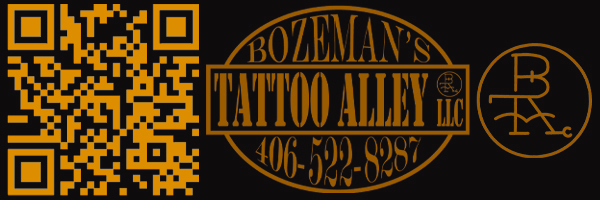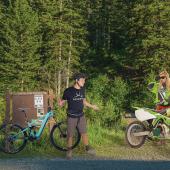Face-Off: AT vs. Telemark
Setting the skintrack straight.
Ski gear seems to be getting lighter every year, with new materials and new designs. If you don’t have the latest and greatest, good luck keeping up on a ski tour—unless you have the lung capacity and mental fortitude of David Goggins. Still, there’s a ragtag group of people out there who refuse to give in: the telemark skiers. They flaunt their free heels, steel quads, and gracefulness (perhaps a bit too much) as superior to the locked-in feet and clunky movements of their alpine-touring counterparts. But do the classic aesthetics of tele skiing really stack up to all the advantages of modern AT gear? Let’s find out.
Cost
For the common man, touring is an expensive sport in any capacity, exceeded in cost only by Nordic skiing, when you factor in not just the equipment, but all the technical jackets, dorky sunglasses, and spandex that Nordies wear. Still, the cost of brand-new skis, boots, and bindings for both tele and AT gear can set you back a few grand. And though secondhand AT gear is more abundant than used tele equipment, the former’s popularity also preserves its value, so you’re stuck shelling out several hundo either way.
Edge: Tie
A telemarker’s boot bellows may, after four or five miles of continuous squeaking, drive her fellow skiers to the brink of madness.
Learning Curve
Skiing can be more than just a means to an end—for many, it’s an art form. And from “never-ever” beginners to all-terrain trailblazers, the challenge of mastering the slopes is a rewarding one. Learning to ski with one less dynamic element is by all standards an easier feat. All said and done, tele skiing might be more fulfilling once mastery is achieved, but that proficiency comes years after AT folks are sending cliff routes.
Edge: AT
Legacy
At its core, the purpose of the free heel is to gain vertical elevation. In its earliest days, the liftable heel was born out of necessity, and dropping a knee became a natural consequence of this elemental design. Like most things, skiing has evolved through the marvels of modern engineering, and since the invention of the AT binding, the utility of the free heel is now appreciated by both AT and tele skiers alike. In short, it all started with tele, and AT is just piggybacking.
Edge: Tele
Aesthetics
To properly contrast the aesthetics of AT and tele skiing, consider the concept of “ultimate expression”—for example, when an angler chooses to use static artificial flies instead of juicy, squirming nightcrawlers, embracing the added challenge in the interests of purity. The same ideology is reflected in a tele skier. He proudly eschews the advantages of AT gear and chooses a more difficult method. When executed properly, it results in a masterful display of confidence and coolness—often referred to as “steeze” in the skiing world. Damn straight it looks better.
Edge: Tele
Acoustics
Like two different wild beasts, each type of backcountry gear makes its own unique vocalizations in the skintrack. A telemarker’s boot bellows may, after four or five miles of continuous squeaking, drive her fellow skiers to the brink of madness. But the clickety-clack of an AT set-up, which sounds like a woodpecker in slow motion, can have the exact same effect.
Edge: Tie
AT skiers, even at their best, look pretty goofy carving tight squiggly lines into the snow right next to their buddies'.
Humility
From a young age, we’re tasked with learning to differentiate between good and bad attention. Some grasp the concept faster than others, but we all develop it in our own time—well, most do, anyway. Tele skiers seem to be lagging behind developmentally, as the only thing they love more than dropping knees is telling everyone that they do so. Likewise, though, AT skiers will be the first to give you an unsolicited account of their “epic” dawn-patrol mission with 4,000 feet of vert before 5am. Let’s face it: all skiers are tools.
Edge: Tie
The Turn
Even to the untrained eye, the telemark turn exemplifies enthusiasm, elegance, and athleticism. AT skiers, even at their best, look pretty goofy carving tight squiggly lines into the snow right next to their buddies’—even on untracked powder fields, as they tend to do. They could learn a thing or two about free-flow and creativity, but it must be tough with their heels locked up. “Free your heel, free your mind...”
Edge: Tele
Jumping
Going airborne is part and parcel of the skiing experience. Obviously, we tend to be conservative in the backcountry, for safety reasons; but in the right conditions, there’s no reason not to let ’er rip. An unsecured heel means an unstable landing, with every other jump ending in a face-plant.
Edge: AT
Jokes
What does “telemark” mean in Norwegian? Hey guys, wait up! Everyone’s heard that one, and there’s almost no limit to the ways tele skiers can be made fun of. Here’s another classic: What did the tele skier say when he ran out of weed? “Man, these bindings suck.” On the other hand, we can only think of a single AT joke: “Randonnee” is French for “Can’t tele.” Therefore, tele skiers come out with the short straw when it comes to being the butt of a joke.
Edge: AT
AT gear might have some technical advantages, especially in the modern era of extreme skiing, but tele has the elegance, utility, and aesthetics of something much more timeless.
Fitness
If you’re aiming for a 100-day season, do you count every day, even if you arrive at the mountain at noon and start tailgating by 3pm? Absolutely, but especially so if you’re lunging into each turn. Just half a day tele skiing can make for an intense workout. That’s not to say AT skiing isn’t demanding, but when was the last time you were with a telemarker who skied an entire day without making up some excuse to take a break? “I’m gonna head in to warm up my toes real quick, catch you on the next lap…” The saying, no pain, no gain, holds true here.
Edge: Tele
Score: 4-3
Winner: Tele
Let’s give it up for the telemark skiers, keeping the soul of the sport alive. AT gear might have some technical advantages, especially in the modern era of extreme skiing, but tele has the elegance, utility, and aesthetics of something much more timeless. At its core, it’s kinda like coffee and tea—those ever-elegant Brits sipping in quiet sophistication, while we American rubes quaff and clamor. Regardless, if these results have piqued your interest, snag a set of tele skis at a local shop—just be sure to consult your orthopedic surgeon first.






































